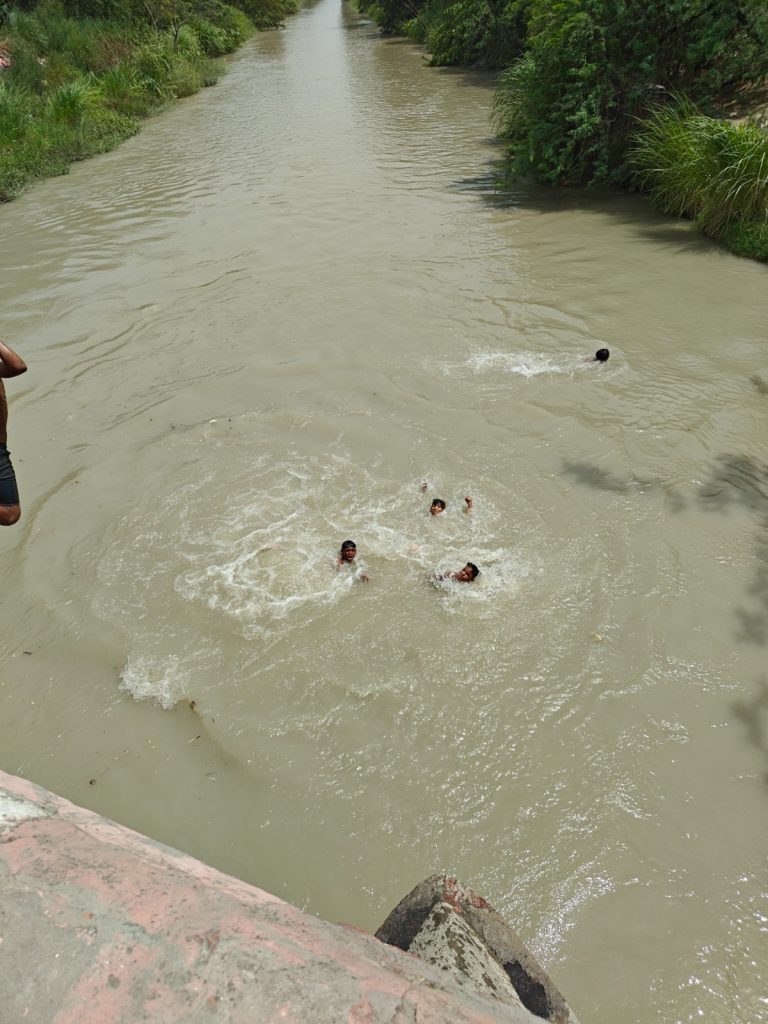NEW DELHI, India/Sumaiya Ali/ Massive heatwave, record-breaking temperatures and a large rural population. This is India’s largest state- Uttar Pradesh also known as UP.
Uttar stands for north and Pradesh means state, the name iterates the fact that it is situated in northern India.
It is the country’s largest state which has been identified as being “water stressed” in 2023.
Out of India’s 109 districts which are prone to climate change and water scarcity, 22 districts are in Uttar Pradesh.
Drying rivers and ponds
Ganga river which is considered holy runs through UP’s Varanasi city. Owing to intense heat, this year Ganga recorded an all-time low water level.
Several towns and cities are reported to witness dry hand pumps and ponds.
Bundelkhand, Mathura and Aligarh are one of them.
In April 2022, UP government announced several initiatives to revive dried up wells and ponds with the help of social organisations which work for the conservation of water resources.
A report in Hindi news website Amar Ujala says that most of the ponds in Lalapur and Gopipur villages have dried, affecting the life of animals who depend on these.
A report in Indian news website First Post reports about Gopipur village and its severe water shortage. As a result, men of the village are not able to find brides.
“All of them found me suitable, but the prospect of having their daughter live in a village where there is no water was not acceptable to them”, a daily wage worker tells the news website.
Groundwater level crisis
Uttar Pradesh, accounts for more than 15% of India’s groundwater resources.
Groundwater level in several districts of western Uttar Pradesh has been declining constantly over the decade. A major reason has been the dependency on groundwater and decrease in water recharge of natural resources.
Water recharge is when ponds, rivers regain their water level through rainfall.
Although the water recharge has decreased, the demand of groundwater has only increased.
As per ‘The United Nations World Water Development Report 2022 – groundwater making the invisible visible’ India is among top ten countries with the highest shares in global groundwater withdrawal in 2017.
Uttar Pradesh’s population which holds a large share of population in rural areas has traditionally been dependent on groundwater such as hand-pumps.
Groundwater has been reportedly going down over the years, adding to people’s problems.


Indian minister of agriculture stated that its groundwater level has fallen alarmingly in the last years.
The Government of India has taken several initiatives to reduce the dependency on ground water, and to increase the availability of ground water through both natural and artificial, while conserving and rejuvenating water bodies across the country.
In Shahajaha pur town of Uttar Pradesh West, the government provided water line gets functional two-times a day for half-an hour. In total, one hour water supply for the entire day. Majority of the town depends on this, as not everyone can afford to get a sumbersible water pump at their home. “People used to depend on hand-pumps, but since the ground water level is decreasing, most of them are barely functional”, Saman Khan, tells us.
Khan uses both submersible pump at home and government provided water to fulfil their water needs in a family of about 12 people.
Indian government website has visual representation of the depleting ground water level over the last years.


Urban Trouble
Adjacent to the capital New Delhi is Noida which is a part of Uttar Pradesh.
Societies in Noida, near to Delhi have reportedly resorted to buying private water tankers to meet their needs. Society residents complain that they have repeatedly raised the issue to the authorities but received no response. As a result, swimming pools in some residential apartments have been non-operational.
Some sectors in Noida have complained of dry taps and even dirty water.World’s famous Taj Mahal is situated in Uttar Pradesh’s Agra.
Agra has been facing water shortage since years now. Reports suggest that ponds in the city have been drying or being grabbed by land dealers. Moreover, the government has failed to clean its nearby Yamuna river.
Raman Tyagi, Neer NGO told us that the use of water is more but the resources remain limited. “Earlier we used to have monsoon of months, but now barely 20 or 22 days of rainfall happens”

Tyagi’s NGO works for reviving dried water resources. According to him increasing urbanisation and construction are to blame as well.
“Water is everything. It is life”, he adds.

What is the solution?
The government is taking steps to move to a more sustainable model for water conservation, but it needs to catalyse its actions. Community and citizen participation towards saving water and reducing water wastage remains essential. With increasing demands for water should be an increase in efforts towards maintaining natural resources of water and preventing them from depleting.
Indian government should continue to work with social organisations who work for the cause. As Raman Tyagi told London post, we have only a few years for this situation to become worst.
It is better we act now. As the popular slogan in India says- Jal hi Jeevan hai (Water is life).






